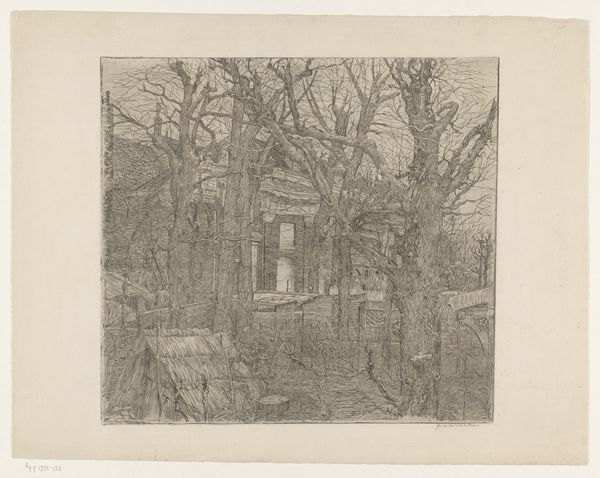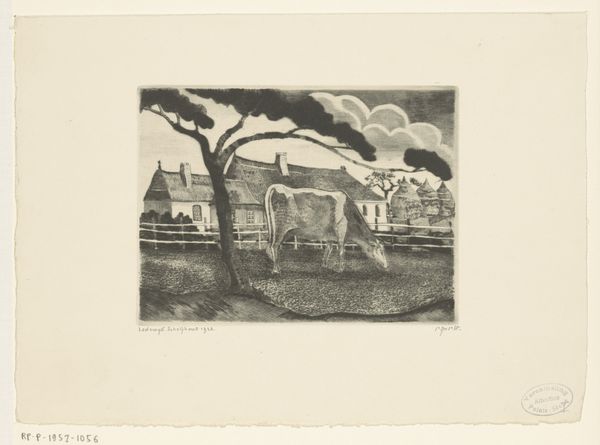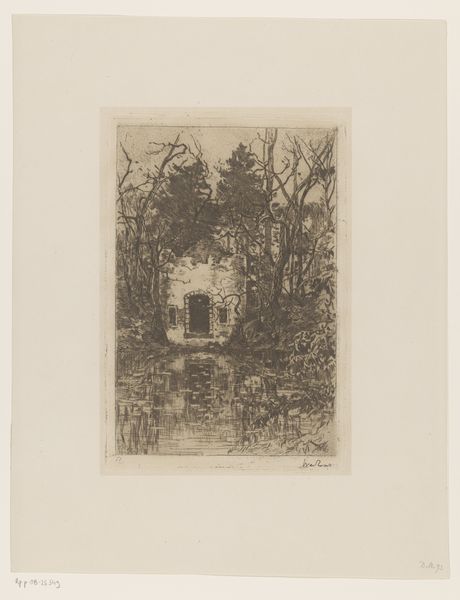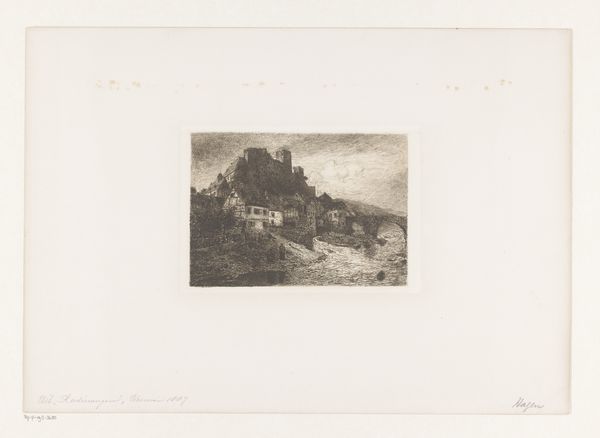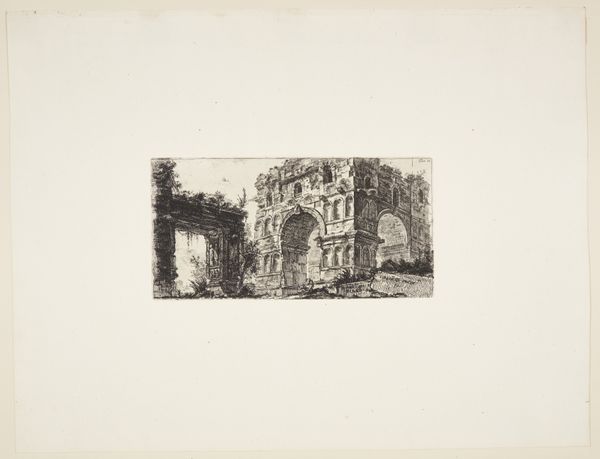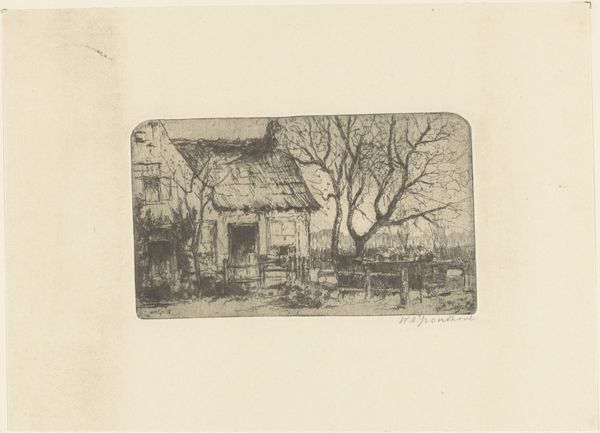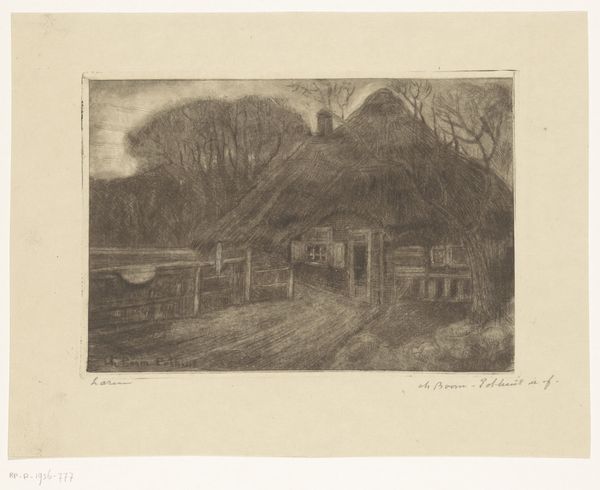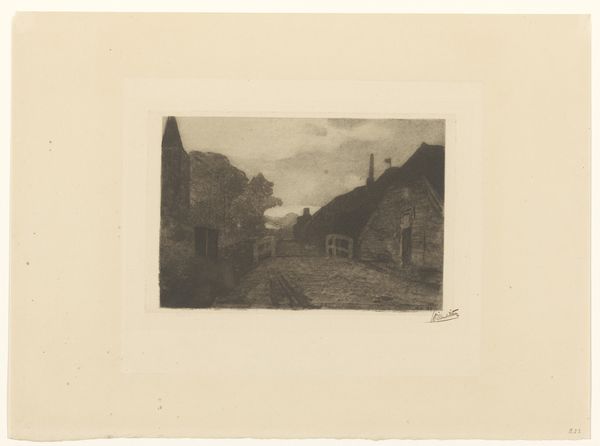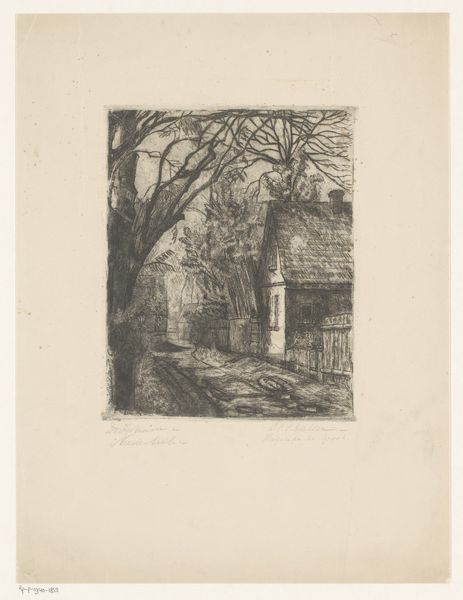
print, etching, engraving
# print
#
etching
#
landscape
#
house
#
linocut print
#
cityscape
#
engraving
Dimensions: height 296 mm, width 325 mm
Copyright: Rijks Museum: Open Domain
Curator: Look at this image, isn't it arresting? It's called "Ruïne van een huis," or "Ruin of a House," by Arend Hendriks. He created this etching, this little world of lines and shadows, sometime between 1911 and 1942. It's currently held at the Rijksmuseum. Editor: My first thought: desolation. A fragile ghost of a building standing amidst what appears to be, well, nothing. You feel that wind howling, don't you? It makes me want to burrow deep inside myself. Curator: Exactly! Hendriks really captured a feeling. There's something almost… beautiful about decay, about the passage of time etched into the very stones. It also feels so human, somehow. Like a metaphor for our own impermanence. Editor: Or perhaps a brutal comment on societal collapse? Look closer; this isn’t just nature taking its course. These are the wounds of conflict, the silent screams of war etched, literally, into the landscape. We cannot divorce art from the context of its making; 1911-1942… that period echoes with global upheaval. This 'house' might symbolize something far grander destroyed during that era. Curator: I get your point, the timing is important. But there's also a playfulness here, at least to my eye. See how the branches of the tree seem to almost caress the broken walls? Editor: Playfulness, really? The image is dominated by shades of gray; a landscape of loss that reflects social and political disillusionment. The texture mimics, perhaps unconsciously, the brutal textures of trauma. There’s nothing light here, just weight. Curator: But that weight also feels cathartic, you know? As if witnessing the ruin allows us to acknowledge, to process, even… to heal. Perhaps. Editor: Maybe. It does force one to confront uncomfortable realities; war, destruction, systemic inequalities... These structures rarely crumble equally. But it’s precisely that discomfort that drives change. Art shouldn't simply mirror the world. Curator: True, this small, quiet etching speaks volumes, doesn't it? A testament to how a ruined house can house such complex emotions. Editor: Indeed. It’s a potent reminder that history isn’t just dates and names, but stories etched in brick, stone, and shadow.
Comments
No comments
Be the first to comment and join the conversation on the ultimate creative platform.


